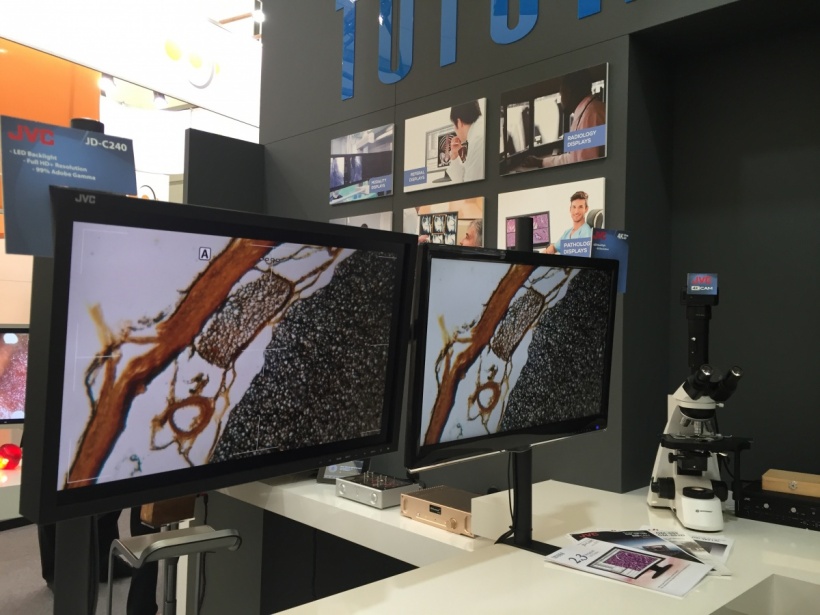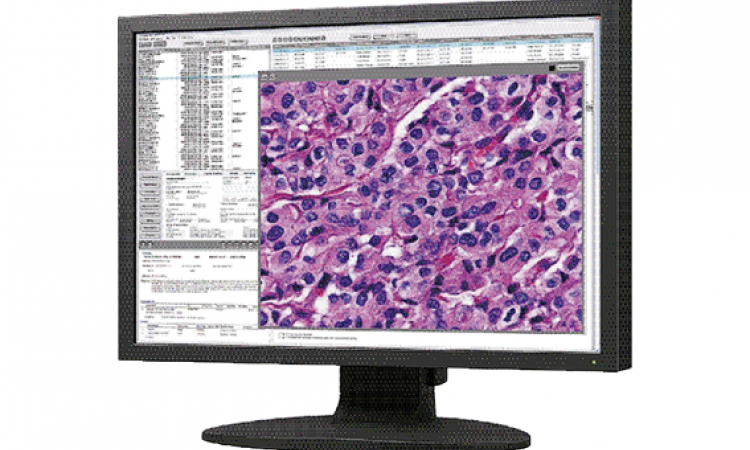Interview • Clear
In sight: greater clarity for pathologists
The equivalent of HD or Ultra-HD for home television and video is now entering the world of medicine. Although 4K technology with its high-resolution display quality is already used in radiology, there are areas that do not yet benefit from this advanced technology.
However, the Japanese company Totoku Electric Co., Ltd. now offers a simple and effective solution for pathology where 4K technology is yet to be used. In our interview with Marcel Herrmann, Marketing Manager for the Medical Displays division at Totoku Europe, he underlined: ‘Pathology still works with analogue procedures in many areas, but high resolution images would be of huge benefit especially for these areas.’

Since talk about 4K technology, and even 5K, is widespread in medical circles, why is interest so keen?
‘This technology delivers the type of high-resolution images that we already have in our homes and which are now conquering the world of medicine. In certain areas of medicine, such as radiology, high-resolution images are nothing new. Displays with five million to 15 million pixels are standard here. However, other areas, such as pathology, don’t yet benefit from these high-resolution images, although the advantages are obvious. Pathologists need more details in their images than radiologists. To date they have viewed these through microscopes.
‘The current procedure in pathology involves scanning sections and then digitally viewing them at the workstation. Once the sections are digitised it’s easy to obtain a second opinion by digitally sending the sections on. This also makes diagnosis easier. The practical implementation of 4K technology is relatively easy: All you need is a computer, a display and a graphics card that can convert 4K, and almost all graphics cards these days are capable of this.’
With that simplicity, surely this technology should be far more established?
‘The difficulty is that apart from the computer and technical prerequisites for the technology display you also need sources that can deliver 4K. The technological solutions for this are comparatively expensive.’
Is this where Totoku’s solution comes into play?

‘We know that many people shy away from large investments but still want to jump from working with analogue procedures straight to 4K because they see the huge benefits, particularly for pathology. This is why we have developed a competitive solution, which still offers all the advantages of 4K technology.
‘Many microscopes can connect to a single-lens reflex camera. This interface has been used for documentation. However, if the interface is used to connect a 4K camera, which is then connected to the respective digital display, this delivers an effective and affordable 4K solution, which we presented at the ECR in Vienna.
‘We are basically connecting two different areas here, using the experiences gained in professional broadcasting. TV and video production has long worked with very powerful cameras, which makes post-editing easier. Our technology solution is essentially based on experience with professional video equipment. Our answer to the problem is basically a plug and play solution. It would probably take years, or even decades, until the entire pathology workflow is digitised in the conventional way – and it will be expensive. Our solution shortens this process.’
Could the company venture into endoscopy with this solution?
‘Theoretically, yes, although endoscopy requirements are higher because even smaller sensors and camera technology are needed. This will most likely be possible in future generations of equipment, but it’s not yet feasible.’
There is already a lot of talk about 5K. Where will all this end?
‘All of this is a question of what makes sense. The human eye has a limited capacity and the display size has to increase along with the increasing resolution. It basically comes down to a calculation as to the maximum possible size for a monitor on a desk. At some stage the capacity will be reached and I believe that anything beyond 4K, or a maximum of 5K, no longer makes sense.’
Profile:
Qualified as a radio and television engineer, Marcel Herrmann went on to complete a course in Marketing and Communication at the Academy for Marketing and Communication, Dusseldorf. He then spent seven years as a product manager before becoming Marketing Manager in the Medical Displays division at Totoku Europe in 2007.
19.05.2016












